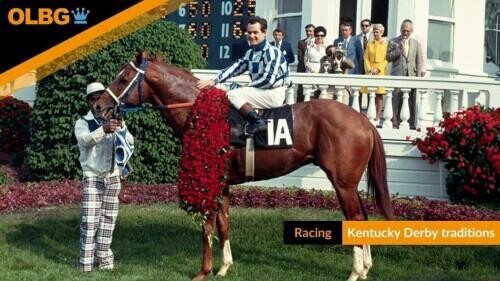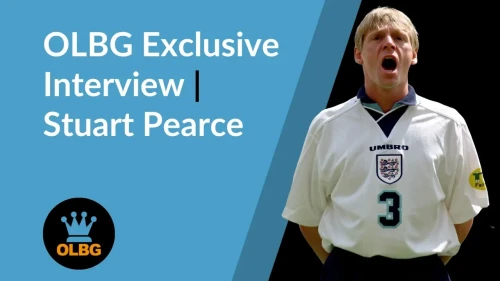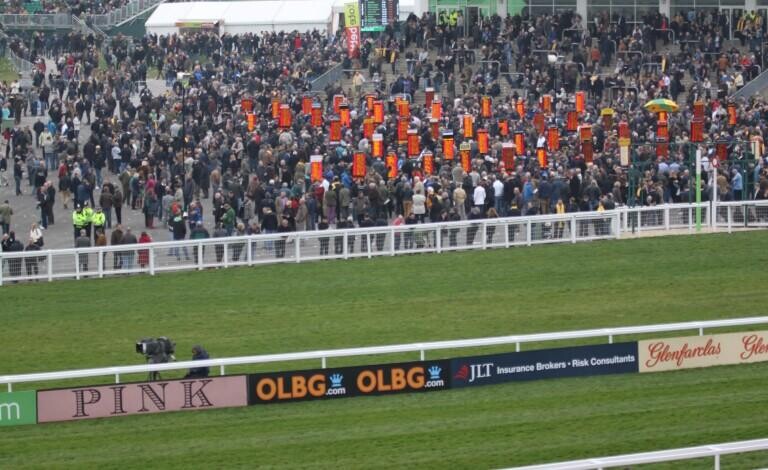Horse Racing stats man, Andy has contributed to OLBG for 18 years - An Ipswich fan and F1 fanatic, he also contributes EFL football and Motor Sport opinion.
The purpose of this blog is to provide readers with some guidelines on assessing value wagers during the Cheltenham National Hunt Racing Festival.

There are few events in the sporting calendar that offer as many betting opportunities as the Cheltenham Festival
It consists of 28 ultra-competitive races over 4 days during March each year.
As a result, our racing tipsters get to put their skills to the test over the four days and you can find all of their tips on the Cheltenham festival tips page.
During recent years, the Cheltenham Festival has become the dominant fixture of the national hunt season.
This is best epitomised by the fact that the major bookmakers clamour to offer ante-post odds for likely contenders at the next festival as soon as the most prestigious races are run at the current meeting.
Competition between the bookmakers for turnover and profits also reaches a crescendo during the 4 days of the Cheltenham Festival.
Cheltenham Bookmaker Frenzy
The bookies will be clamouring to bring us the most attractive concessions, offers and freebies during the 4 day Cheltenham Festival.
This results in many of the major firms offering concessions and enhanced terms to punters in an attempt to secure market share, which is great for punters
However, it is often difficult to evaluate which of the bookmakers cheltenham offers actually provides us with the best value.
Unlike many of the blogs that will be produced prior to the start of the Cheltenham Festival, including a number penned by myself, this article will not provide readers with suggested methodologies for selecting potential winners based on horse racing form
I have covered those subjects on other blogs, and on OLBG there is: How To Find Winners - 101 Tips To Choose A Winning Horse racing Bet
Introducing the VALUE CALCULATOR
Naps Of The Day - How To Choose Value Selections
I will concentrate here on identifying the best concessions and enhanced terms that are available from the bookmakers.
Ante-Post Markets
Many of the major bookmakers will have set up their ante-post markets for the most prestigious races at the next Cheltenham Festival just minutes after the race has been run at the current festival meeting.
During the next 12 months, punters will be tempted to place early wagers on their selections at the odds that prevail at the time that the bet is struck.
The odds are therefore fixed for the bet irrespective of whether the selection's price contracts or drifts as a result of subsequent form.
Ante-Post Betting
You should get much bigger odds when betting ante-post, but those bigger odds come at a price - that price is your horse not running in the race.
If the selection is not entered for or is withdrawn from the race prior to the event being run, then under most circumstances the punter will lose their stake.
Therefore, punters must consider whether the odds that are offered by the bookmaker at the time that they place their ante-post wager, offer sufficient value
The odds need to cover not only the selection's chance of winning (and/or being placed in the case of an each-way bet) the race but also the risk of the selection not running in the event.
There is no definitive method of determining whether ante-post odds offer value.

Although punters will undoubtedly have assessed their selection against the likely opposition and made allowances and calculations of the risk.
For example, a punter may consider Horse A to have a 25% chance of winning a race when assessing it against the likely opposition, which suggests that on the day of the race when stakes are refunded if the selection is confirmed as a non-runner, the punter would consider odds greater than 3/1 as offering an element of value.
However, when placing an ante-post wager, the punter must also consider the chance that the selection will not line up for the race.
This will therefore reduce the percentage chance of the selection winning by a suitable margin.
Under these circumstances, the punter may decide that the margin for non-participation should be 20% of the selection's chance of winning the race, in which case the punter would believe that Horse A has a 20% chance of running and winning the race, so would be seeking odds in excess of 4/1, prior to placing an ante-post wager on Horse A.
The non-participation of horses at the Cheltenham Festival is often an insoluble conundrum for many punters who do not have access to the thoughts of the horse's connections.
Non-Runner Conundrum
It is a risk placing a bet when connections may not have fully decided on whether to run the horse in that specific race.
Many potential runners are entered for more than one race that is scheduled to take place during the 4 days of the festival but is most likely to only run in one event during the period.
In order to negate the risk of punters losing their stake due to the non-participation of their selection, many bookmakers now offer non-runner no bet concessions for ante-post wagers.
This however will also often reduce the price of most of the horses in the ante-post market to negate the loss of revenue as a result of returning stakes on non-runners.
Many of the bookmakers announce their non-runner no bet offers for specific Cheltenham Festival races at different times throughout the year, this can result in a situation where some firms will be offering lower ante-post odds for a horse than some of the competition, but with the non-runner no bet concession.
When this happens, punters need to consider which terms offer the best value in respect of their selection.
If Bookmaker X is offering 3/1 with the non-runner no bet concession, but Bookmaker Y has the horse at 4/1 without the concession, which firm offers the best value?
Assuming the punter believes that the horse in question has a 30% chance of winning the race, but only a 60% chance of participation, the maths are as follows.
Bookmaker Y offers 4/1 which equates to a 20% chance of winning.
However, the wager has a 40% chance of losing due to the horse not running.
Therefore the punter actually only has a 60% chance of the wager winning.
However, if the horse does run it only has a 30% chance of winning the race and providing a return on the 60% of the wager.
Therefore, the wager has 30 x 60/100 chance of winning which equates to 18%, which is less than the 20% chance that odds of 4/1 represent, which is poor value.
Bookmaker X offers 3/1 which equates to a 25% chance of winning.
The punter will be refunded his stake if the horse does not run in the race.
Ante-Post Betting Odds
You may well have a choice between great odds with no non-runner concession OR poorer odds but with your money back if the horse is a non-runner.
Therefore if the horse does run in the race the punter retains a 100% of the original 30% chance of the wager winning, which is good value.
Under other circumstances, the best value may lay with the higher odds on offer with the Bookmaker that is not offering the non-runner any bet concession, so it is important that the punter considers both options before placing an ante-post bet.
However, before placing an ante-post bet, the punter must also consider whether such a bet will offer the best value when compared with the odds and other concessions that are likely to be available from the bookmakers on the day, this I will consider in the next section.
Although it is worth noting that at least one of the major bookmakers is offering Best Odds Guaranteed on certain races at the Festival, which may partially alleviate this concern.
Albeit some of the odds quoted appear to offer little in the way of value when compared with the best ante-post prices offered by their competitors.
Day Of The Race Markets
The competition between the online bookmakers is ferocious over the 4 days of the Cheltenham Festival
They offer a multitude of different concessions that punters should consider when placing a bet during the day of the race.
Enhanced Odds on a Specific Runner in the Race
This concession is often offered on the short priced favourite to small stakes and is clearly worth accepting by punters who plan to back the said favourite.
Punters that would not normally consider placing a bet on the favourite at the odds which are generally available should also consider backing the horse at the enhanced odds if they offer value, which can be calculated as follows:
If the punter believes that the favourite has a 40% chance of winning the race, but is generally on offer at Evens, then there is clearly no value to be obtained by placing a bet on the horse.
However, if the horse can be backed at enhanced odds of 3/1 to a £10 stake, then on the basis that it should theoretically win 4 times if the race is run on 10 occasions, the return would be 4 x £40 which equates to £160 for a theoretical £100 outlay.
Obviously, the punter can also place a wager on their preferred selection, so in effect has 2 chances of securing a return on the race.
Stakes Returned as a Free Bet if Selection Loses
This concession may be offered on one specific runner (usually the favourite), or on all runners.

Punters should look out for this concession as it offers the chance to back their selection as a no-lose wager, which is a rare opportunity.
If the concession is only offered on one runner in the race and it happens to be the punter's selection, then the punter should consider whether the odds on offer with the concession provide value when compared with the odds available from bookmakers that are not offering to refund stakes if the selection loses.
A recent example of this concession involved an odds on favourite that could be backed with the concession at odds of 1/3 to a maximum of £10, but was available at best odds of 2/5 elsewhere.
In my opinion, the horse in question had a 67% (1/2) chance of winning and in normal circumstances, I would not have placed a wager on the favourite.
However, the maths, in this case, suggested that with the free bet being offered odds of 1/3 actually represented better value than the 2/5 which was generally available elsewhere, as follows:
Assuming that the horse would win twice from 3 theoretical runnings of the race, then the returns to a £10 stake under each scenario is as follows:
Odds of 2/5 without free bet concession: £28 (2 x £10 x 7/5)
Odds of 1/3 with free bet concession: £36.67 (2 x £10 x 4/3, plus £10 free bet if the selection is beaten)
Under these circumstances backing the horse at the lower odds with the free bet concession appears to be the wise option.
Very rarely, a bookmaker will offer stakes returned as a free bet on all runners in a race.
In this scenario, irrespective of the horse that the punter wishes to bet on, it makes sense to consider the maths, as above.
If the selection can be backed at best odds with the bookmaker offering the free bet concession, then it is unlikely that the punter will achieve better value elsewhere.
However, if the selection can be backed at bigger prices elsewhere, the punter should complete the above calculations, as it is rare for the value to lay with the bookmaker offering bigger odds without the free bet concession.
Stakes Retuned as a Free Bet if Horse X Wins the Race
Obviously, this concession has no bearing on punters who wish to back Horse X, who should look for value elsewhere.
However, if the punter intends to place a wager on another runner in the race, then it is worth considering whether the free bet concession offers value.
Again, if the bookmaker offering the free bet concession has also chalked up the best odds for the punter's selection, then it would seem unlikely that better value will be found elsewhere.
However, if the odds with the free bet concession are lower, then the punter should calculate the value on offer under each scenario, as follows:
To complete the calculation the punter will need to assess the chance of both Horse X and his selection have of winning the race.
For the purpose of this calculation, I shall assume the Horse X has a 40% chance of winning, whilst the punter's selection is believed to have a 20% chance of being successful.
I will also assume that the bookmaker offering the free bet concession has the selection priced up at 9/2, whilst the selection is best priced at 6/1 elsewhere.
Backing the selection at best odds offers a 20% chance of securing a return of £70 to a £10 stake, so if the race is theoretically run 10 times, then the return would be £140.
However, backing the selection at 9/2 with the free bet concession offers a 40% of securing a free bet (the chance of Horse X winning the race), plus a 20% chance of securing a return of £55 to a £10 stake, so if the race is theoretically run 10 times, then the return would be £110, plus 4 x £10 in free bets which equals £150.
Therefore, backing the selection at shorter odds with the free bet concession appears to offer the best value.
Stake Returned as a Free Bet if Selection finishes second in the race
This concession is especially useful if there appears to be one main danger to the punter's selection, or the selection is a horse who regularly finds one horse too good in his races and at the anticipated odds backing the horse each way is not a value option.

If the bookmaker offering the free bet concession is also offering the best odds on the selection, then it is unlikely that the punter will secure better value elsewhere.
However, if better odds are on offer elsewhere, then the punter should consider whether the concession offers value over a straight win bet at better odds.
To consider this scenario, the punter needs to assess not only his selection's chance of winning the race but also how likely it is of finishing second.
For the purpose of this calculation, I shall assume that the selection has a 30% chance of winning the race and a 40% chance of finishing second, as it is clearly the best horse on form barring the main danger, which we will assume is the favourite for the race.
The bookmaker offering the free bet concession has priced up the selection at 5/2, whereas odds of 3/1 are available elsewhere.
Backing the selection at best odds offers a 30% chance of securing a return of £40 to a £10 stake, so if the race is theoretically run 10 times, then the return would be £120.
However, backing the selection at 5/2 with the free bet concession offers a 40% of securing a free bet (the chance of selection finishing second in the race), plus a 30% chance of securing a return of £35 to a £10 stake, so if the race is theoretically run 10 times, then the return would be £105, plus 4 x £10 in free bets which equals £145.
Therefore, backing the selection at shorter odds with the free bet concession if the horse finishes second appears to offer the best value, although under different circumstances better value may be obtained by the punter placing the wager at the highest odds.
Similar concessions are offered by bookmakers including:
Stakes returned as a free bet if the selection finishes second to the SP favourite.
Stakes returned as a free bet if the selection finishes second, beaten by less than a specific distance.
Both of these concessions offer less benefit to the punter and may prove difficult to assess as it is not always possible to determine which runner is likely to start the race as the favourite and almost impossible to evaluate the likely winning distance prior to the race being run.
However, they may be of benefit to the punter on occasions, albeit it will be rarely worth the punter securing these concessions at the cost of accepting lower odds than are on offer with competitor bookmakers.
Stakes Returned as a Free Bet if Selection Falls in the Race
This concession usually covers runners that fall, unseat their rider, or are brought down during the course of a race and is worth considering when the punter wishes to place a wager on a runner who has the class to win the race, but has a history of falling due to jumping problems.
One horse that springs to mind that would have been backing with this concession is Moscow Flyer who was one of the great 2 mile chasers of my generation but was often over-exuberant when jumping fences.
At one stage in his chasing career, he had recorded 12 victories from 17 starts over fences, but had fallen or unseated his rider on the remaining 5 occasions, usually when appearing to be the most likely winner if he stayed on his feet.
Cheltenham Fallers
Look back at the 10-year trends of the Cheltenham race, does the race have a history of fallers?
It is never easy to determine if this type of horse is going to part company with his jockey in a particular race, but as a rule of thumb dividing the number of falls by the total number of races over fences (or hurdles) gives a reasonable indication of the percentage chance of the horse failing to complete.
If the bookmaker offering this concession is also offering the best odds for the horse to win the race, then the punter would be wise to place his wager with the bookmaker.
However, if the odds with the bookmaker offering the concession are lower than can be obtained elsewhere, then the punter should consider the options based on the following calculation:
I shall assume that the selection has a 30% chance of winning the race and a 30% chance of failing to complete the course due to a jumping error.
The bookmaker offering the free bet concession has priced up the selection at 5/2, whereas odds of 3/1 are available elsewhere.
Backing the selection at best odds offers a 30% chance of securing a return of £40 to a £10 stake, so if the race is theoretically run 10 times, then the return would be £120.
However, backing the selection at 5/2 with the free bet concession offers a 30% of securing a free bet (the chance of selection falling in the race), plus a 30% chance of securing a return of £35 to a £10 stake, so if the race is theoretically run 10 times, then the return would be £105, plus 3 x £10 in free bets which equals £135.
Therefore, backing the selection at shorter odds with the free bet concession if the horse falls appears to offer the best value, although under different circumstances better value may be obtained by the punter placing the wager at the highest odds.
Best Odds Guaranteed
This concession is now widely available and many of the major bookmakers offer BOG on all races in the UK and Ireland.

It is impossible to calculate the benefit to punters of this concession in general terms as there is no knowing how the market will react after the punter has placed a wager.
However, from personal experience it is most frustrating to have placed a wager on a horse at what I believe to be odds that offer value, only for the price to drift out after the bet has been placed and for the horse to then win at the inflated odds, as emotionally I feel as if I have backed a loser.
If the punter can obtain best odds for a selection and secure BOG at the time that the bet is placed, then there is little point in the punter looking to place the bet with an alternative bookmaker.
However, if the selection is offered at bigger odds with a bookmaker that is not offering this selection, then the punter needs to consider whether the odds are likely to contract, remain the same, or drift between the time that the bet is placed and the time that the race is run.
Unfortunately, there are no hard and fast rules in this scenario and it is purely down to the punter's best estimate as to how the market is likely to react,
Although if the selection has been tipped up by one or more of the most famous media pundits, or a tipping service, then the likelihood is that the price will contract,
Whereas if the selection is generally unfancied by the pundits, etc or is running in a race where they have tipped another horse, then there is a reasonable chance that the punter's selection may drift in the market.
In the latter situation, it may be worth the punter taking a slightly shorter price on the selection with best odds guaranteed, rather than placing the bet at slightly bigger odds without BOG, but nothing is certain in this game.
Free Bet if the Selection Wins at Odds of XXX or Bigger on any Televised Race
By taking up this concession the punter is effectively securing a 1 point boost to the quoted odds for their selection providing the horse wins the race and the odds are greater than the minimum odds quoted for the concession, which is usually either 3/1, or 4/1.
Therefore, if the punter can back their selection with a bookmaker that is offering this concession at the best odds (which are greater than the minimum odds for the concession) that are available at the time the wager is placed, they are effectively securing even better value to the tune of 1 full point,
E.G A bet on an 8/1 shot, effectively pays 9/1, as the punter also receives a free bet for the same stake in another race.
Therefore, it may be worth the punter placing the wager with the bookmaker offering the concession even if the odds are slightly less than the best on offer in the market,
E.G 13/2 plus a free bet, may be considered better value than best odds of 7/1 with a bookmaker who is not offering a similar concession.
Form Study
As well as studying the race with the free bet offer make sure you study the following race that is related to the free bet.
However, it is worth noting that usually only the win portion of the wager qualifies for the free bet.
The other potential issue is that the free bet often has to be placed on the next televised race.
This means that unless the punter has a firm selection for the qualifying race, they will have to place the bet on a horse which they may not have fully assessed, especially as time will be limited to make the selection and place the bet prior to the start of the next race.
I would therefore recommend that any punter who secures the concession in respect of their selection in the first race, also carefully assesses the next televised race to ensure that they have a valid selection on which to place the free bet, if their initial wager is successful.
Betting Without The Favourite
This concession is often worth considering when the market is headed by a short-priced favourite, which appears to have a rock-solid chance of victory in the race.

To assess which option offers the best value, the punter should consider the odds that are available for their selection in both the normal win market and the market without the favourite.
In order to undertake this analysis, the punter will need to know the likely chance of the favourite winning and the chance that their selection has of finishing first in the race.
For the purpose of this example, I will assume that the favourite has a 50% chance of winning, whilst the punter's selection has a 20% chance of finishing first in the race and that the selection can be backed at best odds of 5/1 to win the race outright, whilst the odds without the favourite are quoted at 5/2.
Backing the selection at best odds in the outright market offers a 20% chance of securing a return of £60 to a £10 stake, so if the race is theoretically run 10 times, then the return would be £120.
However, backing the selection at 5/2 in the without the favourite market offers a 40% chance of securing a return (20/100 chance of an outright win plus a 20/50 chance of beating the remainder of the field if the favourite who has a 50% chance of winning the race is successful) of £35 to a £10 stake, so if the race is theoretically run 10 times, the return would be £140.
Therefore, in this example, the value option is to back the selection in the without the favourite market, although under different conditions it may be worthwhile backing the selection to win outright.
Additional Place Concession
This concession is most often offered for large field competitive handicaps where the standard place terms would be 1/4 odds for 4 places.
The bookmaker often pays out on the 5th and or 6th horse.
Obviously, the concession is of no benefit to punters who intend to place a win only bet on their selection.
Check Place Terms
Bookies will enhance certain big field races with extra places OR offer extra places with a reduction in odds.
Such is the competitive nature of the handicaps at Cheltenham that many punters will wish to secure some level of insurance by backing their selection each way, in case it runs well but fails to win the race.
As with many of the other concessions, little consideration is required by the punter if the bookmaker who is offering to pay out on the fifth finisher in the race is offering the current best odds on their each-way selection, but if that is not the case then the punter should undertake further analysis to determine the best value option.
The analysis is more complex for this concession as it is necessary to consider both the win and place positions of the wager to arrive at the overall position.
For the purpose of this example, I will assume that the selection has a 10% chance of winning the race and 40% chance of finishing in the first 4 places and a 50% chance of finishing fifth at worst in the race, and that it can be backed at 12/1 with the bookmaker that is offering the concession, but is available at 14/1 with competitor firms who are only paying out on the first 4 places.
The returns, as usual, will be based on 10 theoretical runnings of the race, in which a £10 each way bet is placed, as follows:
- Bookmaker odds of 14/1 offering 1/4 odds for 4 places.
- Estimated win return (selection has 10% chance) is £150.00.
- Estimated place return (selection has 40% chance: 4 x 14/4 x £10 plus return of 4 x stake) is £180.00.
- The estimated total return is £330 for £200 stake for an overall profit of £130.
- Bookmaker odds of 12/1 offering 1/4 odds for 5 places.
- Estimated win return (selection has 10% chance) is £130.00
- Estimated place return (selection has 50% chance: 5 x 12/4 x £10 plus return of 5 x stake) is £200.00
- The estimated total return is £330 for £200 stake for an overall profit of £130.
Therefore, under these conditions, both scenarios offer equal value to the punter, however, this is an unusual occurrence and under different circumstances, one or other of the options that are available will offer better value for the punter.
Should a bookmaker offer more places but a lower fraction for the place return, such as 1/5 odds for 5 places, against 1/4 odds for 4 places, then the punter should undertake the above analysis to identify the best overall value.
Enhanced Place Returns
Occasionally, one or more bookmakers may offer better place returns, but payout on the same number of places as the remainder of their competitors, e.g. 1/3 odds for 3 places against the standard 1/4 odds for 3 places.

In this scenario, the punter should undertake the same analysis as above to ascertain which firm offers the best value.
Tote Betting
The Tote win and place pools are often worth considering at the most prestigious race meetings including the 4 days of the Cheltenham Festival.
Many occasional on-course punters will place bets at the Tote kiosks rather than with the on-course bookmakers.
This influx of generally small value wagers will often be placed on the favourite, or the most famous trainer, or jockey connected with the race, or the only grey horse, etc and will not only swell the overall pools but will skew the returns for the least favoured horses in the race,
This results in huge dividends that offer, excellent value when compared with the returns for the same bet placed with the bookmakers.
Tote Betting
You may get a much bigger return with the Tote, especially at the bigger meetings where there is more money in the pools
However, it is not easy to predict when the value lies with placing a wager with the Tote
Whilst it is possible to monitor the market position of each runner in the race via the Tote screens, the figures are constantly changing in the lead up to the race,
The estimated dividend for a particular runner may appear to offer value at a certain time, but one or two sizeable bets subsequently placed with the Tote may quickly turn the value position against the punter.
The question for punters is should they take a chance and place their bet with the Tote, or play safe and back their selection with the bookmaker offering the best value for which the return is known.
Unfortunately, only time will tell and hindsight after the event is a wonderful thing.
Exchange Betting
Punters who place their bets with the exchanges can often secure better odds than they would if betting with a bookmaker.
However, they should always consider whether the enhanced price (less commission) offers better value than the bookmaker's odds, plus the benefit of any additional concessions.
I would therefore recommend that punters compare the best bookmaker offers with the exchange odds, prior to placing their bets.
Clearly, making the best use of bookmaker offers and concessions during the Cheltenham Festival will not guarantee a profit at the end of the 4 days of racing.
Cheltenham Festival Offers
Does the bookie offer mean that you are getting better value than if you were betting on the exchange?
However, any edge that punters can secure is worth taking, this can often make the difference between losing, breaking even, and winning.
I also appreciate that punters may struggle to find the time to undertake the required analysis, but in my view it is a worthwhile exercise.
The calculations are relatively quick to complete when compared to the time may punters spend analyzing the chance of each runner in the race.
Even when based on my relatively conservative staking plans, I have found that for every minute I spend assessing the best value for my selections, results in a potential increase in my returns of approximately £1, which in my opinion is a worthwhile return.
I hope that readers have found this analysis of interest and as usual, I would welcome any comments and feedback and if you have enjoyed this blog, please feel free to share the link on social media, with your friends and contacts who are interested in horse racing.
Readers may also wish to check out some of the trends based blogs that I have written in respect of many of the big races at the Cheltenham Festival via the following link:
Cheltenham Festival: Punters Guide
Finally, I wish all readers the best of luck with their selections during the Cheltenham Festival.
No Comments
There are no comments here. Be the first to comment...
Keep Reading
6 popular Kentucky Derby traditions, explained

OLBG compiled and discovered the history behind some of the Kentucky Derby's most popular annual traditions using a variety of online sources.
Continue Reading10 Highly Anticipated Shows to Satisfy Every Type of Reality TV Fan

Using information from news reports, OLBG has created a list of 10 of the most highly anticipated reality TV shows premiering in 2024.
Continue ReadingStuart Pearce Interview with OLBG

Stuart Pearce exclusive interview: West Ham need to be careful what they wish for in Ruben Amorim talks, Arsenal have big advantage over Manchester City in title-race, Nottingham Forest statement is dangerous
Continue Reading
